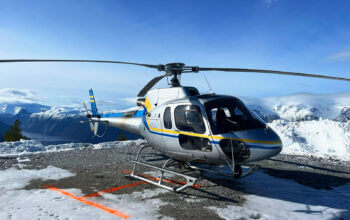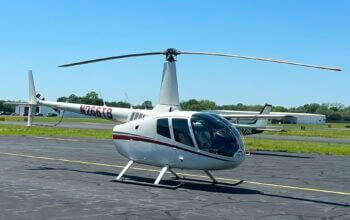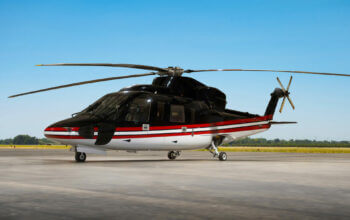The U.S. Army has successfully deployed a fixed-wing drone from a helicopter that then was able to receive video from the unmanned vehicle, proving that so-called “air-launched effects” can survive launch and the helicopter’s downwash before flying independent missions.
In February and March, the Army conducted a series of tests in which an Area-I air-launched, tube-integrated unmanned system, or ALTIUS 600 was released from a Black Hawk. It demonstrated the ALTIUS drone could survive being catapulted forward from a side-mounted tube and escape the rotor downwash undamaged, according to Brig. Gen. Walter Rugen, who heads the Army’s Future Vertical Lift (FVL) development efforts.

“The impulse pushed the air vehicle out of the tube forward, into forward flight, and the rotor downwash didn’t knock the small drone down,” Rugen said in a recent interview. “We were able to launch them at about 100 feet above the ground, which is, we feel, a relevant tactical altitude to maintain the survivability of our manned aircraft.”
The FVL cross-functional team that Rugen leads in April posted a video on Twitter of an ALTIUS launching from a tube mounted on a Black Hawk. The video has since been taken down.
Neither the impulse from launching nor the rotor downwash damaged the sensor mounted on the drone, which was able to fly its intelligence-gathering mission, he said. The ALTIUS was able to deploy its folded wings and aft propeller and then fly a mission locating and surveilling a simulated enemy position.
After launching, typically from a tube on the ground or mounted on a vehicle, ALTIUS can either be flown with a handheld remote control or programmed by a ground control station to navigate to a certain point. Designed to be recoverable, ALTIUS can be set to land on any relatively level surface, according to the Army.
“We’re pretty proud of our [science and technology] community for delivering that so quickly,” Rugen said. “That low-altitude launch from a rotorcraft of a small drone that then can fly forward into the dangerous and dirty environments that we need it to fly into because we don’t want to put a manned platform in there.”
The U.S. Army Combat Capabilities Development Command Aviation & Missile Center Technology Development Directorate led the demonstration of a possible ALE setup, a tentpole technology for FVL.
When advanced rotorcraft like the Future Attack Reconnaisance Aircraft (FARA) and Future Long Range Assault Aircraft (FLRAA) head into combat, they will be targets for enemy long-range precision munitions. The Army wants to arm those aircraft with their own fleets of “semi-attritable” unmanned systems that will expand the manned platform’s situational awareness and perhaps deliver ordinance on enemy targets before the helicopters are within range of enemy fire.
“That small drone will give us the ability to fly up to the edge of our standoff, our weapon-engagement zone of the enemy,” Rugen said.
The drones would be launched to find and fix the location of enemy ground positions and “high-payoff” targets.
“Once they find them and fix them, we’ll be able to finish them with the right shooter,” Rugen said. “If that shooter happens to be long-range precision fires or a joint asset or an Army aviation asset, we’ll be able to deliver that with all the information that air-launched effects give us.”









